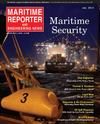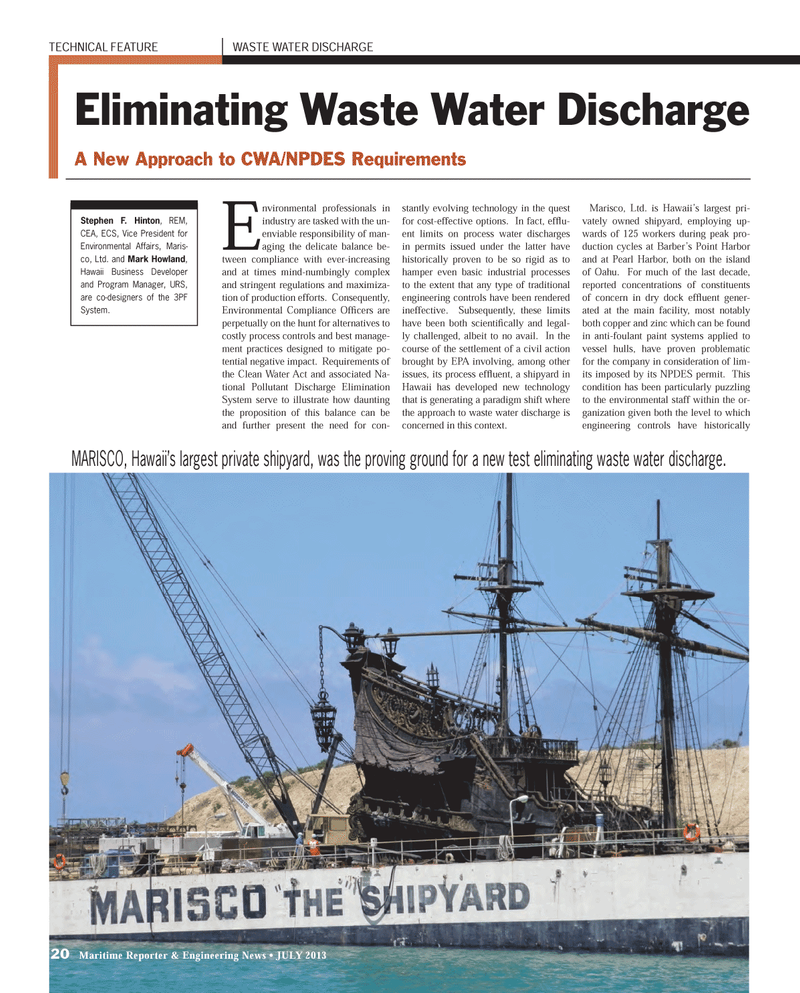
Page 20: of Maritime Reporter Magazine (July 2013)
Maritime Security Edition
Read this page in Pdf, Flash or Html5 edition of July 2013 Maritime Reporter Magazine
TECHNICAL FEATURE WASTE WATER DISCHARGE Eliminating Waste Water Discharge A New Approach to CWA/NPDES Requirements Environmental professionals in industry are tasked with the un-enviable responsibility of man-aging the delicate balance be-tween compliance with ever-increasing and at times mind-numbingly complex and stringent regulations and maximiza-tion of production efforts. Consequently, Environmental Compliance OfÞ cers are perpetually on the hunt for alternatives to costly process controls and best manage-ment practices designed to mitigate po-tential negative impact. Requirements of the Clean Water Act and associated Na- tional Pollutant Discharge Elimination System serve to illustrate how daunting the proposition of this balance can be and further present the need for con-stantly evolving technology in the quest for cost-effective options. In fact, ef ß u-ent limits on process water discharges in permits issued under the latter have historically proven to be so rigid as to hamper even basic industrial processes to the extent that any type of traditional engineering controls have been rendered ineffective. Subsequently, these limits have been both scientiÞ cally and legal- ly challenged, albeit to no avail. In the course of the settlement of a civil action brought by EPA involving, among other issues, its process efß uent, a shipyard in Hawaii has developed new technology that is generating a paradigm shift where the approach to waste water discharge is concerned in this context.Marisco, Ltd. is Hawaii?s largest pri- vately owned shipyard, employing up-wards of 125 workers during peak pro-duction cycles at Barber?s Point Harbor and at Pearl Harbor, both on the island of Oahu. For much of the last decade, reported concentrations of constituents of concern in dry dock efß uent gener- ated at the main facility, most notably both copper and zinc which can be found in anti-foulant paint systems applied to vessel hulls, have proven problematic for the company in consideration of lim-its imposed by its NPDES permit. This condition has been particularly puzzling to the environmental staff within the or- ganization given both the level to which engineering controls have historically MARISCO, Hawaii?s largest private shipyard, was the proving ground for a new test eliminating waste water discharge. Stephen F. Hinton , REM, CEA, ECS, Vice President for Environmental Affairs, Maris- co, Ltd. and Mark Howland, Hawaii Business Developer and Program Manager, URS, are co-designers of the 3PF System.20 Maritime Reporter & Engineering News ? JULY 2013 MR #7 (18-25).indd 20MR #7 (18-25).indd 207/1/2013 9:06:25 AM7/1/2013 9:06:25 AM

 19
19

 21
21
